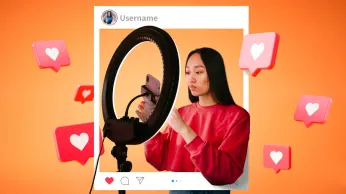On this page
A tiered loyalty program isn’t just another rewards strategy—it’s a proven way to make your customers feel valued and motivated to stay engaged. By offering escalating benefits based on spending or activity, this approach creates a sense of achievement and exclusivity that keeps customers coming back for more.
Unlike traditional loyalty programs, tiered systems reward customers not just for their purchases but also for their continued commitment to your brand. The higher they climb, the better the rewards—be it exclusive discounts, early access to sales, or VIP perks. This not only encourages repeat purchases but also strengthens the bond between your brand and your customers.
In this blog, we’ll dive into how tiered loyalty programs work, why they’re effective, and how businesses can design them to drive retention and revenue. Discover how to turn occasional shoppers into loyal advocates who value their place in your loyalty tiers.
What are loyalty tiers?
Loyalty tiers, often referred to as membership levels, are a structured system businesses use to reward and motivate their loyal customers. These levels are typically based on customer activity, engagement, and spending patterns, encouraging repeat purchases and long-term loyalty. As customers advance through the tiers, they gain access to more valuable benefits.
The naming of loyalty levels can reflect your brand's identity, adding a personalized touch to the program. However, classic tier names like Bronze, Silver, and Gold are effective for clearly indicating a customer’s status within the loyalty program.
What are tiered loyalty programs?
A tiered loyalty program is a membership-based loyalty program. It usually has multiple levels for loyal customers to gain various rewards based on their ranks. We, humans, are very competitive, and we like to win.
The same goes for tiered rewards programs. A normal loyalty program rewards customers’ loyalty alike on their repeat purchases. Whereas tiered loyalty programs rank the customers based on several metrics and assign different levels of rewards based on the customers’ ranks.
Benefits of tiered loyalty programs
Customer retention can be claimed as the fundamental benefit of a loyalty program, but there are plenty of other benefits of loyalty programs, too, especially tiered loyalty programs that have a collection of multi-faceted benefits.
Let us have a look at some of them below:
1. Progressive benefits for the customers
The ranking-based customer reward programs enable your customers to leverage their benefits depending on their rank i.e., the tier they are based on.
Every tier indulges them with more and more exciting rewards and motivates them to earn more rewards and climb up more tiers to get better benefits. This makes your customers feel valued and also gives them a sense of achievement with the higher ranks.
2. Improved customer engagement
The tier system and the ranking that the customers achieve at every level give them a sense of achievement. The thrill of getting promoted to the next tier by earning more loyalty points can excite the customers and encourage them to engage more with the loyalty program.
Planning the scoring system in a certain way and assigning different colors/themes relating to the brand can be a great way to connect with your customers on an emotional level. The constant brand recall in the loyalty program can build strong relationships with your customers.
3. Long-term customer loyalty
Connecting with your customers outside of the standard transactions of the brand with the tiered loyalty programs improves customer engagement. When the customers feel that your brand cares for them even outside of their purchases, they develop an emotional bond towards your brand.
The consistent engagement through your tiered loyalty program with multiple levels of benefits and rewards fosters customer loyalty over the long term.
4. Exciting gamification
The tiered loyalty program already gives an illusion to the customers of playing a game where every time they make purchases and earn points, they go a step up to the next tier.
This allows your organization to come up with interactive and innovative gamification options to keep your customers engaged and interested. There can be multiple levels of your choice, and there can also be several different metrics that can define the incremental rise through the tiers.
5. Fosters loyalty with exclusivity
The tiered loyalty programs unveil the truly loyal customers who are regularly interacting with the brand. Although most of your customers will enjoy participating in the program, the tier system will help to filter out the most loyal customers who will want to reach the top tier of the program.
Hence, it promotes exclusivity or perhaps a club of the true advocates of your brand, wouldn’t you agree?
What makes tiered loyalty programs attractive and sustainable for customers?
Tiered loyalty programs appeal to customers because they create an engaging system of progression and rewards. Customers are motivated to make repeat purchases as they know their continued support leads to better benefits and personalized services. This approach fosters a sense of accomplishment, making each interaction with the brand feel rewarding.
The structured design of these programs ensures that customers feel valued at every level. Higher tiers bring enhanced rewards, exclusive offers, and a sense of belonging that strengthens their bond with the brand. This dynamic encourages consistent participation and loyalty as customers strive to unlock more meaningful benefits.
Studies reveal that customers in higher tiers spend significantly more than regular ones, demonstrating the effectiveness of these programs in promoting long-term loyalty. A well-thought-out reward system with clear milestones ensures that customers remain engaged and eager to maintain their status, building a lasting relationship with the brand.
How to create a tiered loyalty program?
A tiered loyalty program encourages customer engagement by offering progressively better rewards for higher levels of participation. Here are six essential steps to design an effective program:
1. Identify your goals
Start by defining what you want to achieve with the loyalty program. Common objectives include increasing repeat purchases, boosting customer lifetime value, or encouraging brand advocacy. Clear goals will guide the structure and design of your tiers and rewards.
Example: If your goal is to increase repeat purchases, focus on creating rewards that incentivize frequent shopping, such as discounts for a specific number of purchases within a set period.
2. Understand customer preferences
Knowing what your customers value is critical to building a program that resonates. Analyse customer purchase history, feedback, and demographic data to identify appealing incentives. Rewards could include discounts, exclusive products, or VIP experiences.
Example: Tech-savvy customers may prefer early access to new products, while budget-conscious shoppers may value cashback or discounts.
3. Create accessible and aspirational tiers
Design tiers that are easy to understand and motivate customers to engage. Start with a basic level that everyone can join, such as "Bronze," and gradually increase the exclusivity of higher tiers like "Silver" and "Gold." Clearly define the criteria for advancing between tiers.
Example: Customers earn points for every $1 spent. At 500 points, they move from Bronze to Silver, unlocking 10% discounts, and at 1,000 points, they enter Gold, gaining free shipping and VIP offers.
4. Offer rewards that scale with value
The rewards should become more valuable as customers climb tiers. This progression keeps customers motivated to engage and spend more to unlock higher-tier benefits.
Example:
- Bronze: 5% discount on purchases.
- Silver: 10% discount + free shipping.
- Gold: 20% discount + early access to sales + exclusive products.
5. Use a points-based system
Implement a points system to make it easy for customers to track progress. Points should be earned through specific actions, such as purchases, referrals, or social media engagement. Display their progress prominently, such as on your website or app.
Example: For every $10 spent, customers earn 1 point. Earning 100 points unlocks tier upgrades and redeemable rewards, keeping the program transparent and engaging.
6. Communicate and monitor
Promote the program through emails, social media, and in-store announcements. Regularly update customers about their status, points, and benefits. Monitor program performance using metrics like participation rates, repeat purchases, and feedback to make improvements.
Example: Send personalized email updates about customers' points and notify them about how close they are to reaching the next tier. Use feedback to adjust rewards and ensure the program remains attractive.
Why are tiered loyalty programs so attractive to customers?
There is give and take involved in all aspects of life, and when there is a way to try and get better every time, well, that definitely has a sweet victory-type ring to it. The tier-based loyalty program is solely based on this premise. Tier members at every rank have a variety of benefits and rewards that keep getting better with every higher tier.
Hence, the competitiveness of climbing up the ladder to gain better rewards than others become very appealing to customers.
Customers like to be taken care of, and the fact that with every repeat purchase, they will get more or better rewards and/or higher value benefits and/or more personalized services becomes hard to ignore. It certainly gives them that extra boost of appreciation for your brand and enhanced motivation to buy more in order to climb up that ladder of exclusivity on a tiered loyalty program.
Real-life examples of companies with amazing tiered loyalty programs
Tiered loyalty programs are designed to reward customers based on their level of engagement, offering increasingly attractive perks as they climb the tiers. Here are some standout examples of companies that have mastered the art of tiered loyalty programs to drive customer retention and satisfaction.
1. Sephora Beauty Insider
Sephora’s Beauty Insider program is a perfect example of how tiered loyalty programs can drive customer engagement and spending. The program has three levels: Insider, VIB (Very Important Beauty Insider), and Rouge, determined by annual spending.
- Insider Tier: Free to join, offering basic perks like birthday gifts and access to member-only promotions.
- VIB Tier: For customers spending $350 or more per year, this level unlocks benefits like early access to sales, 10% off during seasonal events, and exclusive beauty classes.
- Rouge Tier: Reserved for the most loyal customers spending $1,000 annually. Rouge members enjoy unparalleled perks, including free shipping, first access to new products, and invitations to exclusive events.This tiered structure motivates customers to increase their spending to unlock premium benefits while fostering a sense of exclusivity and appreciation.
2. Delta SkyMiles
Delta Airlines’ SkyMiles program exemplifies how tiered loyalty programs can turn occasional travelers into lifelong customers. The program features four levels: Silver Medallion, Gold Medallion, Platinum Medallion, and Diamond Medallion.
- Silver Medallion: Members earn basic perks like priority boarding and complimentary upgrades on domestic flights.
- Gold Medallion: Includes waived fees, access to international lounges, and priority customer service for travelers spending more with Delta.
- Platinum Medallion: Offers higher mileage earning rates, premium seat selection, and even greater upgrade opportunities.
- Diamond Medallion: The pinnacle of the program, providing exclusive benefits such as Delta Sky Club membership, a dedicated customer support line, and the ability to choose custom perks like additional miles or travel vouchers.This structure keeps frequent fliers motivated to stay loyal by offering increasing value and luxury at each tier.
For more inspiring examples of tiered loyalty programs, read our blog "8 Tiered Loyalty Program Examples to Attract and Retain Customers in 2025." Discover how these programs can help your business stand out!
What makes tiered loyalty programs attractive and sustainable to customers?
Going through all the loyalty program benefits of the tiered system does bring the case in point that customers do prefer them over any regular loyalty program. Studies show that customers are more likely to spend more to get more exclusivity from the brand.
Customers tend to favor the tiered system of loyalty programs as they get to decide and make a choice at the level of exclusivity they would like to reach. Without realizing it, they usually tend to compete for the next level for the excitement of better and more valuable rewards. This helps to keep the relationship going with the customers and sustain their loyalty for longer periods.
Rewards and experiences in tiered loyalty programs
One could argue that any type of reward is exciting for customers but that’s further from the truth. Albeit the thought of having well-planned and innovative loyalty programs for loyal customers to feel valued is already a winning move but consistently sustaining customer interaction requires amazing rewards and experiences.
The type of rewards system and experiences that make them work hard to earn enough loyalty points to be eligible to win them. Such is our Loyalife, the first-of-its-kind network that empowers you with the most comprehensive redemption suite, enabling your customers to redeem loyalty points online, offline, instantly, and from any channel.
Gift Marketplace will be your one-stop shop for all your must-haves and lifestyle products, such as flights, hotels, hi-tech, fashion, jewelry, and more. Accessible in over 50 countries, with 50,000+ affiliate programs and 55 million+ users.
How Loyalife can help run a tiered loyalty program
Loyalife offers a dynamic and innovative platform to create and manage tiered loyalty programs that enhance customer engagement and build long-term relationships. With its AI-driven loyalty engine, businesses can design scalable programs tailored to unique customer needs.
Advanced analytics provide real-time insights, empowering businesses to track performance and make informed decisions. Seamless integration with existing CRM systems ensures a unified loyalty experience, while diverse reward options keep customers motivated and excited to participate.
Key features of Loyalife for tiered loyalty programs:
- Customizable rewards: Access over 10 million redemption options, including travel bookings, gift cards, merchandise, and charitable donations, offering customers meaningful and flexible rewards.
- Omnichannel engagement: Leverage tools to design and execute personalized campaigns across email, SMS, and social media, creating a cohesive and engaging loyalty journey.
- AI-driven insights: Utilize cutting-edge analytics to monitor customer behavior, refine tier structures, and optimize program effectiveness for better results.
- Enhanced security and privacy: Benefit from robust fraud management features and strict data protection measures to ensure the safety of customer information and program integrity.
Takeaway
We already agree that in this competitive and dynamic economy, smart customer retention strategies are a must, and a tiered loyalty program is the ace of it all.
Tired loyalty programs not only allow the customer to leverage their benefits but also give your organization multiple ways to keep your customers entertained and satisfied throughout the customer lifecycle.
We could go on and on, but you get the gist. So what are you waiting for? Let’s get to designing your one-of-a-kind tiered loyalty program today!
FAQ's
1. How do tiered loyalty programs benefit businesses?
These programs enhance customer retention, increase average spending, and foster brand loyalty. They also provide valuable data about customer behavior for improved marketing strategies.
2. What types of rewards can be offered in a tiered loyalty program?
Rewards can include discounts, free products or services, exclusive access to events, early sales access, or personalized perks such as tailored offers and gifts.
3. How many tiers should a loyalty program have?
The number of tiers depends on the business model and customer base. Typically, 3-4 tiers strike a balance between simplicity and motivation.
4. How can customers move up tiers?
Customers usually advance by accumulating points through purchases or completing specific actions, such as referrals, social media engagement, or milestone achievements.
5. How can businesses ensure customers stay engaged with the program?
Businesses can maintain engagement through personalized communication, exclusive benefits, surprise rewards, and regular updates about tier status and progress.
6. Can tiered loyalty programs be implemented across multiple channels?
Yes, most programs are designed for omnichannel experiences, allowing customers to earn and redeem rewards across online stores, mobile apps, and physical locations.
7. Are tiered loyalty programs suitable for all industries?
Yes, these programs can be adapted to various industries, including retail, hospitality, banking, airlines, and more, as long as the rewards align with the customer’s needs and preferences.
8. What are some challenges of running a tiered loyalty program?
Challenges include designing appealing rewards, managing program costs, maintaining customer engagement, and ensuring fair progression through tiers.
9. How can a business measure the success of its tiered loyalty program?
Success can be evaluated using metrics like customer retention rates, program participation, increased spending, customer lifetime value, and feedback surveys.
10. Do tiered loyalty programs work for small businesses?
Yes, small businesses can benefit by creating simple and cost-effective tiered programs that reward loyal customers, enhance relationships, and encourage repeat business.









